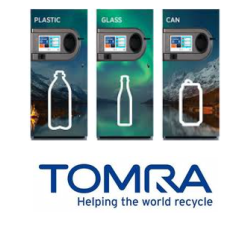Research Driven Marketing Blitz Creates National BuzzLearn how one leading manufacturer of reverse vending machines (RVMs) used consumer market research to drive the sale of RVMs across the country. Reverse Vending Machines offer retailers an unmanned solution for accepting glass, plastic and aluminum bottles and cans at grocery stores, convenience stores and some retail locations where $.05 deposits are charged, however they are expensive and require a designated resource to manage.
Target Audience Grocery Stores in Bottle Deposit States Situation A leading manufacturer of reverse vending machines (RVMs) was looking to introduce a new line of RVMs to their North American market. To kick off the product launch, they wanted to reach out to new prospects and existing customers (grocery, drug and big box retailers) in bottle deposit states to introduce the new and improved RVMs. (For those of you who are unfamiliar with reverse vending machines, RVMs are the machines that accept bottles and cans in exchange for a receipt. These receipts are then exchanged for cash at the customer service counter of a store or redemption center. The total amount back is based on the deposit amount ($.05 or $.10) times the number of bottles or cans you have returned.) Grocery store owners have the choice to collect and sort cans manually or to purchase RVMs for their store. Consumers use the RVMs, but are not directly part of the purchase decision. Steps to Achieve Goal The RVM manufacturer knew that grocery store owners did not want to make unnecessary capital investments. RVMs are expensive particularly in contrast to the slim margins for grocery stores. Since RVMs are only needed in bottle deposit states, there is a limited number of retailers who would even consider buying the equipment. What they needed was a way to convince prospects that RVMs were worth buying and they needed a way to convince current customers that the new machines were worth the upgrade. At the time, this seemed like a tall order given that many of these owners had heard the pitch many times before. However, CenterStage uncovered independent research that stated "grocery stores with RVMs drove more customer foot traffic than those who accepted cans manually." As a result, CenterStage created a marketing blitz that focused solely on this simple message, “RVMs increase foot traffic.” A multichannel marketing blitz was quickly spun up. Personalized email messages, post cards and letters were sent to grocery store owners and managers. Sales teams were given scripts that highlighted the market research findings and a limited time promo was offered to existing customers that would discount upgrades on new RVMs or discount higher quantity purchases, to create urgency. Along side the campaign, CenterStage worked with sales teams to implement a national survey to get feedback from store owners about their satisfaction with RVMs and what they would like to see in future models. Outcome CenterStage used key metrics and tracking methods to determine which outreach methods generated the most traction. Successful methods were then expanded to future outreach campaigns. From the survey, we learned that store owners preferred RVMS that could handle more volume, allowed for on-site programming and produced coupons for in-store purchases. We also learned that store owners valued the relationships they had with their sales reps, so we recommended more ways to increase the depth of the relationship between sales reps and their customers. |
|
CenterStage ensures that your team has the information and the tools they need to optimize every interaction with potential customers in a personal and relevant way.
|
|
© COPYRIGHT 2023 ALL RIGHTS RESERVED.



